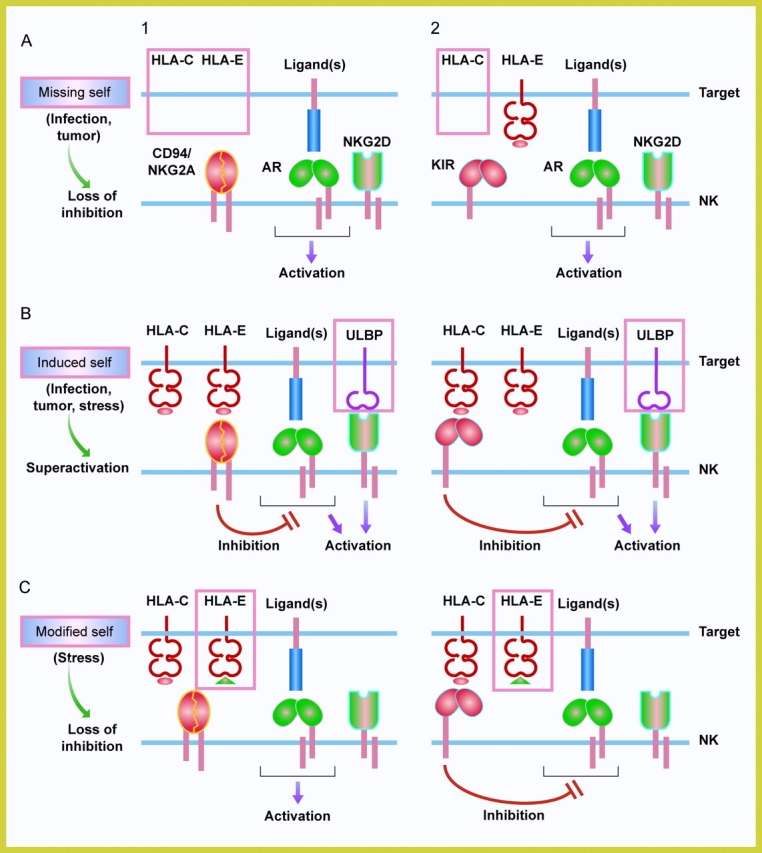Figure 1.

Outcomes of surveillance by NK cells. NK cells survey cells for changes in self, represented here by MHC class I and MHC class I–related molecules (e.g., ULBP, MICA). (1) Depicts an NK cell that is inhibited by the HLA-E-specific receptor CD94/NKG2A, and (2) depicts one that is inhibited by an HLA-C–specific KIR. The KIR family also includes inhibitory receptors with three Ig domains that bind to HLA-A and HLA-B. A representative activation receptor (AR) of the natural cytotoxicity receptor family is shown in association with an immunoreceptor tyrosine-based activation motif (ITAM)-containing subunit, such as DAP12. NK cells express multiple activation receptors on their cell surface. NKG2D is a lectin-like receptor that is associated with the subunit DAP10. (A) “Missing self”: a global down-regulation of the expression of MHC class I molecules, as seen in certain tumors or during viral infections, results in the loss of surface HLA-E. The lack of engagement of the inhibitory CD94/NKG2A leads to activation of NK cells (A1). The loss of a single class I allotype, such as HLA-C, may activate NK cells that express an HLA-C-specific inhibitory KIR (A2). (B) “Induced self”: expression of ligands of NKG2D is induced on target cells due to cellular stress, transformation, or viral infections and results in an activation of NK cells despite the presence of inhibitory receptors (Superactivation). It is not known if NKG2D engagement bypasses inhibition or if it overrides inhibition by enhancing activation signals from other receptors. ULBP is a family of molecules with α1-α2 domains. NKG2D binds also to MICA and MICB, which have α1-α2-α3 domains. ULBP and MICA/B proteins are not associated with β2-microglobulin and do not bind peptides. (C) “Modified self”: stress-induced molecule hsp60 provides a signal sequence-derived peptide that binds to HLA-E and prevents recognition by inhibitory CD94/NKG2A. This results in activation of NK cells expressing CD94NKG2A (C1) but not of NK cells expressing inhibitory KIR (C2).
